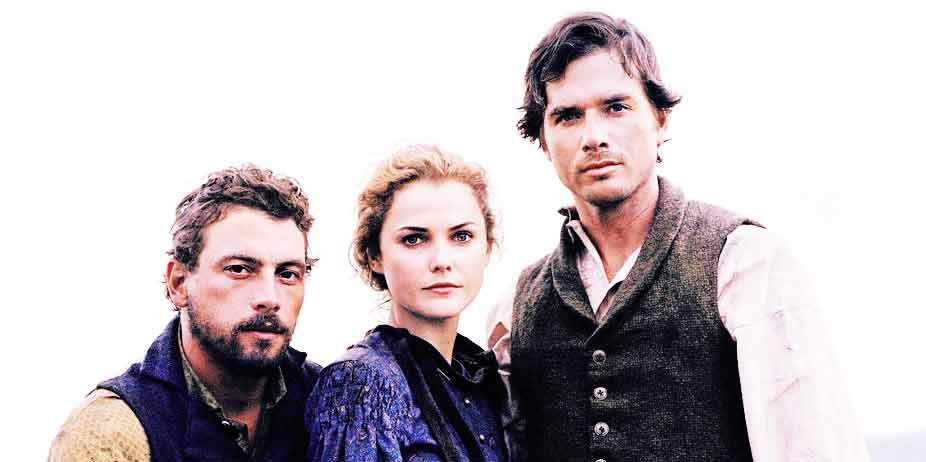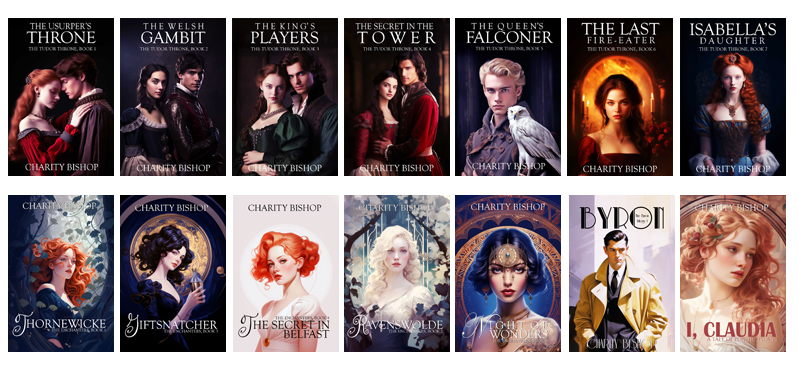
Into the West (2005)
Fans of history of the American west will love this in-depth, gritty look at over seven decades of progress in our nation's history, as it follows two different families, one Indian, the other wheel-makers, through the exploration of new territories and the aftermath of war.
Though his family is content to live in the civilization of Virginia, Jacob Wheeler (Matthew Settle) dreams of adventure out west. He spends his free hours reading up on all the trapper heroes who have forged into the untamed wilds. When a stranger passes through and mentions that the famous explorer and trapper, Jedediah Smith (Josh Brolin), is looking for mountain men to accompany him on a trek to California, Jacob leaves his family behind and sets out to fulfill his dreams. Though young and inexperienced, Smith takes a shine to him, and teaches him how to survive in a treacherous territory full of wild bears and hostile Indian tribes.
Several years later, Jacob rescues an Indian girl, Thunder Heart Woman (Tonantzin Carmelo), from being sold to a merciless trapper and takes her home to her village among the Lakota. Many years earlier she was traded in marriage to a kind man who has since been killed. Her family is struggling to find a place in "the white man's world." Troubling visions of the collision between the two societies plague the mind and heart of young Loved by the Buffalo (George Leech), who has been chosen as the next medicine man.
Over twelve hours and six episodes, the series follows both the siblings, cousins, and descendants of the Wheelers and the members of the Lakota tribe through major historical events. Each episode revolves around fictional characters with real events as the backdrop. Episode 1 deals with the mountain men and trappers. Episode 2 follows pioneers traveling in covered wagons across the plains. Episode 3 introduces the gold rush and the end of the Pony Express. Episode 4 deals with the building of the Trans Continental Railroad and the Sand Creek Massacre. Episodes 5 and 6 deal with the rounding up, the attempted civilization, and the massacres of the Indians. From a purely historical standpoint, this is a valuable resource that paints a realistic picture of life in the old west. Its authentic weaponry, languages (several dialects of Indian languages are spoken), costuming design, weaponry and writing give a stirring and often disheartening authenticity to characters and events.
There are historical inaccuracies here and there, as well as some smoothing over of the behavior of certain tribes toward one another, but what the audience is most left with is the realization of how wrongly many treated the Indians. Yet, there are good white men and women too... some fictional and some not. Faith is not explored in depth although Smith does abstain from the pleasures of the flesh, quotes scripture (even when having his skull stitched up after a bear attack), and references his faith in God. There were many times I was both touched and moved to tears through the injustices suffered.
From a pure storytelling standpoint... this series is depressing. Half the characters are dead before the end, some of them in horrific circumstances. You can't go a single episode without someone being trampled to death, drowning in a river, getting killed by Indians, shot by gold miners, or dying of cholera. Some of the couples we fall in love with are reduced to one as the series progresses (two main couples do make it to the end). Characters are introduced and their story unfolds for one episode... and some of them disappear, never to be seen again and leaving us wondering what happened to them. In changing out the cast for older actors in the second half, it becomes very confusing trying to keep all the characters straight. Though it is full of wonderful performances, I almost think it would have been wiser to stick with the same actors throughout. (And what a cast it is -- everyone from Graham Greene to Rachael Leigh Cook and Sean Astin make an appearance.)
If American history fascinates you and you aren't overwhelmed with the tragedy of many of its events, this is a fantastic way to spend twelve hours... but so emotionally draining you may never want to see it again.
Sexual Content:
Two attempted rapes (neither are successful, or particularly graphic); some kissing between married couples in a bedroom setting.
Language:
Mild profanities and abuses of deity; one use of n*gger.
Violence:
Buffalo are run over a cliff; we see their necks break as they hit the rocks on the way down; horses are shot down in battle; a bear is shot after it mauls someone. Men, women and children are gunned down in massacres, shot in raids, impaled with arrows, stabbed with knives, and blown up with cannons. Lots of carnage in the aftermath of Indian massacres, murder sprees in abolitionist towns, etc. Various characters are trampled to death, drown in rivers, are bludgeoned on the head, shot, stabbed, mauled by bears, run over by wagons, die of cholera, etc. Some bloody wounds.
Other:
There is a great deal of Indian mysticism, references to
the great spirits, to worshipping buffalo, and scenes
involving pagan rituals and prophecies. Some "Christians"
mistreat the Indians or say bad things about Negros.
